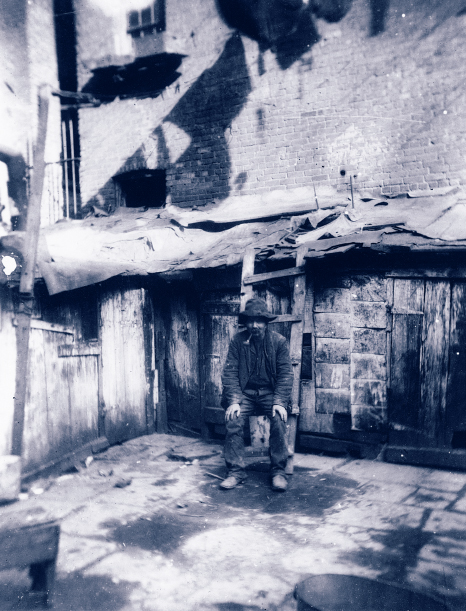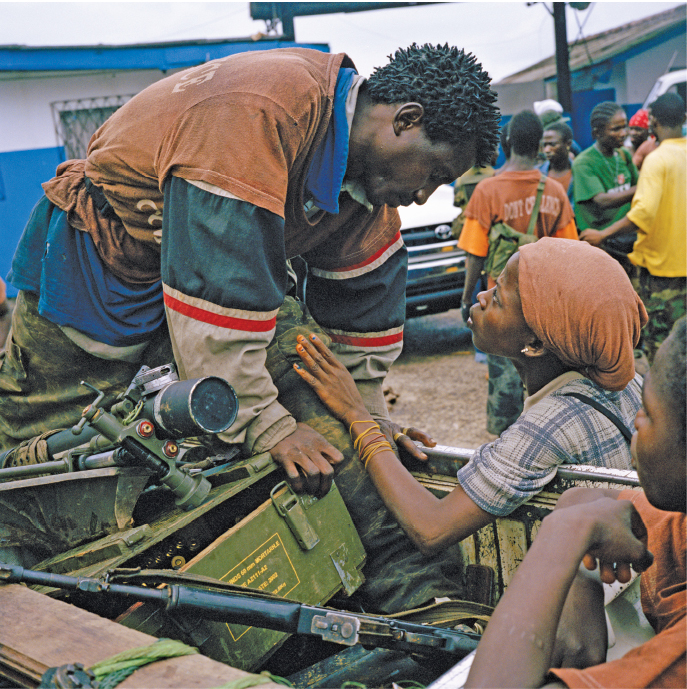Case Study
CASE STUDY
The Evolution of Photojournalism
by Christopher R. Harris
What we now recognize as photojournalism started with the assignment of photographer Roger Fenton, of the Sunday Times of London, to document the Crimean War in 1856. Technical limitations did not allow direct reproduction of photodocumentary images in the publications of the day, however. Woodcut artists had to interpret the photographic images as black-and-white-toned woodblocks that could be reproduced by the presses of the period. Images interpreted by artists therefore lost the inherent qualities of photographic visual documentation: an on-site visual representation of facts for those who weren’t present.
Woodcuts remained the basic method of press reproduction until 1880, when New York Daily Graphic photographer Stephen Horgan invented half-tone reproduction using a dot-pattern screen. This screen enabled metallic plates to directly represent photographic images in the printing process; now periodicals could bring exciting visual reportage to their pages.

The Tramp, c. 1890. Riis, who emigrated from Denmark in 1870, lived in poverty in New York for several years before becoming a photojournalist. He spent much of his later life chronicling the lives of the poor in New York City. Courtesy: The Jacob A. Riis Collection, Museum of the City of New York.
In the mid-1890s, Jimmy Hare became the first photographer recognized as a photojournalist in the United States. Taken for Collier’s Weekly, Hare’s photoreportage on the sinking of the battleship Maine in 1898 near Havana, Cuba, established his reputation as a newsman traveling the world to bring back images of news events. Hare’s images fed into growing popular support for Cuban independence from Spain and eventual U.S. involvement in the Spanish-American War.
In 1888, George Eastman opened photography to the working and middle classes when he introduced the first flexible-film camera from Kodak, his company in Rochester, New York. Gone were the bulky equipment and fragile photographic plates of the past. Now families and journalists could more easily and affordably document gatherings and events.
As photography became easier and more widespread, photojournalism began to take on an increasingly important social role. At the turn of the century, the documentary photography of Jacob Riis and Lewis Hine captured the harsh working and living conditions of the nation’s many child laborers, including crowded ghettos and unsafe mills and factories. Reaction to these shockingly honest photographs resulted in public outcry and new laws against the exploitation of children. Photographs also brought the horrors of World War I to people far from the battlefields.
In 1923, visionaries Henry Luce and Briton Hadden published Time, the first modern photographic newsweekly; Life and Fortune soon followed. From coverage of the Roaring Twenties to the Great Depression, these magazines used images that changed the way people viewed the world.
Life, with its spacious 10-by-13-inch format and large photographs, became one of the most influential magazines in America, printing what are now classic images from World War II and the Korean War. Often, Life offered images that were unavailable anywhere else: Margaret Bourke-White’s photographic proof of the unspeakably horrific concentration camps; W. Eugene Smith’s gentle portraits of the humanitarian Albert Schweitzer in Africa; David Duncan’s gritty images of the faces of U.S. troops fighting in Korea.
Television photojournalism made its quantum leap into the public mind as it documented the assassination of President Kennedy in 1963. In televised images that were broadcast and rebroadcast, the public witnessed the actual assassination and the confusing aftermath, including live coverage of the murder of alleged assassin Lee Harvey Oswald and of President Kennedy’s funeral procession. Photojournalism also provided visual documentation of the turbulent 1960s, including aggressive photographic coverage of the Vietnam War—its protesters and supporters. Pulitzer Prize - winning photographer Eddie Adams shook the emotions of the American public with his photographs of a South Vietnamese general’s summary execution of a suspected Vietcong terrorist. Closer to home, shocking images of the Civil Rights movement culminated in pictures of Birmingham police and police dogs attacking Civil Rights protesters.
In the 1970s, new computer technologies emerged that were embraced by print and television media worldwide. By the late 1980s, computers could transform images into digital form and easily manipulate them with sophisticated software programs. Today, a reporter can take a picture and within minutes send it to news offices in Tokyo, Berlin, and New York; moments later, the image can be used in a late-breaking TV story or sent directly to that organization’s Twitter followers. Such digital technology has revolutionized photojournalism, perhaps even more than the advent of roll film did in the late nineteenth century. Today’s photojournalists post entire interactive photo slideshows alongside stories, sometimes adding audio explaining their artistic and journalistic process. Their photographs live on through online news archives and through photojournalism blogs such as the Lens of the New York Times, where photojournalists are able to gain recognition for their work and find new audiences.
However, there is a dark side to all this digital technology. Because of the absence of physical film, there is a loss of proof, or veracity, of the authenticity of images. Original film has qualities that make it easy to determine whether it has been tampered with. Digital images, by contrast, can be easily altered, and such alteration can be very difficult to detect.

A recent example of image-tampering involved the Ralph Lauren fashion model Filippa Hamilton. She appeared in a drastically Photoshopped advertisement that showed her hips as being thinner than her head—like a Bratz doll. The ad, published only in Japan, received intense criticism when the picture went viral. The 5’10”, 120-pound model was subsequently dropped by the fashion label, because, as Hamilton explained, “they said I was overweight and I couldn’t fit in their clothes anymore.”1 In today’s age of Photoshop, it is common practice to make thin female models look even thinner and make male models look unnaturally muscled. “Every picture has been worked on, some twenty, thirty rounds,” Ken Harris, a fashion magazine photo-retoucher said; “going between the retoucher, the client, and the agency … [photos] are retouched to death.”2 And since there is no disclaimer saying these images have been retouched, it can be hard for viewers to know the truth.
Photojournalists and news sources are confronted today with unprecedented concerns over truth-telling. In the past, trust in documentary photojournalism rested solely on the verifiability of images (“what you see is what you get”). This is no longer the case. Just as we must evaluate the words we read, now we must also take a more critical eye to the images we view. 
Christopher R. Harris is a professor in the Department of Electronic Media Communication at Middle Tennessee State University.